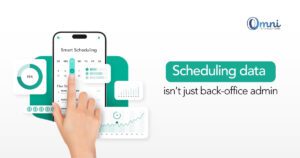When a patient reaches out to your support line, it’s rarely about something small. They’re calling about medication confusion, insurance coverage, a missed appointment, or test results they can’t interpret.
It’s personal. It’s urgent. And every second they wait, their trust erodes just a little more.
In healthcare, CX isn’t just about convenience — it’s about care.
The Problem: Support Channels Can’t Keep Up
Over the past two years, healthcare organizations have seen a dramatic increase in call volume across:
- Patient access and scheduling
- Insurance verification and billing
- Telehealth support
- Pharmacy coordination
- Claims and benefits clarification
But many internal support teams weren’t designed to scale quickly, especially not in response to unexpected surges from staffing shortages, seasonal illness spikes, or new program rollouts.
And when volume spikes? Hold times grow. Frustration builds. And patients start questioning the competency of the entire system before they even get through.
The Cost of Inflexible CX in Healthcare
In a clinical setting, patient care is always the top priority. But the administrative and communication side (the experience layer) often gets left behind.
The impact of slow or inconsistent support:
- Missed appointments = delayed care
- Confusion over benefits = treatment avoidance
- Long wait times = increased abandonment and escalations
- Poor communication = lower CAHPS or CSAT scores
- Staff burnout = turnover, errors, and increased costs
It’s not just about operational headaches; it’s about quality of care and organizational reputation.
The Solution: Flexible CX That Scales When You Need It
Healthcare organizations are increasingly turning to fractional workforce solutions to build CX capacity without adding overhead or delaying implementation.
That means:
- Scaling support fast during open enrollment or seasonal demand
- Accessing trained, HIPAA-compliant agents with healthcare-specific experience
- Supporting multichannel communication — voice, chat, SMS — with consistent quality
- Reducing stress on internal teams by flexing external coverage during peak hours
This isn’t a temp agency Band-Aid. It’s an operational model built for agility, accuracy, and empathy — without compromising compliance.
Why It Works
A fractional model lets you flex up or down based on volume, keeping costs in check while maintaining service quality. It also means you can launch new services or handle unexpected surges without overloading your core team.
With the right CX partner, you gain:
- Transparent billing models based on productive hours
- QA frameworks aligned to your KPIs and standards
- Teams that are trained for the emotional nuance of healthcare conversations
- Confidence that every agent interaction reinforces trust, not breaks it
What the Future of Healthcare CX Requires
As patients take a more consumer-like approach to healthcare, expectations will only increase. They want fast answers. Clear billing. Accurate referrals. Friendly voices.
The organizations that thrive will be those that treat CX not as a back-office function, but as a frontline strategy with the flexibility to adapt in real time.
Conclusion
Healthcare CX isn’t just a support function; it’s a reflection of care. And when patients are waiting, your support operation has to move faster, scale smarter, and respond with empathy. Otherwise, the cost isn’t just churn; it’s trust.
About Omni Interactions
Omni Interactions helps healthcare organizations scale patient-facing support with HIPAA-certified agents and a flexible staffing model that grows with your demand, not against it. Whether it’s open enrollment, seasonal volume spikes, or everyday operations, we’re built to keep your support system healthy.



